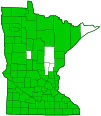little bluestem
(Schizachyrium scoparium
Conservation • Wetland • Description • Habitat • Ecology • Use • Distribution • Taxonomy
Description |
||
Little bluestem is a very common, medium-height, warm season grass. It occurs in the United States, Canada, and Mexico east of the Rocky Mountains. It is found in dry open areas, including prairies, savannas, pastures, old fields, woodland openings, roadsides, and railroads. It grows under full sun in dry to moderately moist but well drained soil. Little bluestem is highly variable. Plants in Minnesota are almost always mostly hairless. They rarely have hairs anywhere except on the basal leaves. In the early season, the basal leaves are usually blue. Little bluestem is a perennial, cool season (C3) grass that rises on basal leaves and a clump of multiple stems from a fibrous root system. There is sometimes a short, underground, horizontal stem (rhizome). In the spring it appears as a round, 2′ to 3′ (61 to 91 cm) high, loose or dense mound of narrow, bluish-green leaf blades. In mid-summer it produces flowering aerial stems (culms). The stems (culms) are solid, erect, 1⁄32″to ⅛″ (1 to 3 mm) in diameter, and freely branched just near the top. They are usually 6″ to 36″ (15 to 90 cm) tall, sometimes taller. They may be round in cross section or slightly flattened. They are not grooved, and they do not root at the nodes. The nodes are swollen, and the culms are often wine red or purplish near the nodes. The base of the culm is erect, not laying on the ground and curving upward (decumbent). When young, the culms are light green or bluish green and are covered with a whitish, waxy bloom (glaucous). Later in the season they turn coppery, orangish, or reddish bronze. They remain erect throughout the winter. Most of the leaves are basal. Stem leaves are alternate and are mostly on the lower part of the culm. The part of the leaf blade that surrounds the stem (sheath) is open, flattened, ridged (keeled) on the back, bluish green, and glaucous. The junction between the sheath and the leaf blade (collar) is pale and whitish. The leaf blade is distinctly narrowed before the collar, and the sheath is distinctly constricted near the collar. Where the leaf blade meets the sheath there is a thin, pliable appendage (ligule). The ligule is 1⁄64″to ⅛″ (0.5 to 2.5 mm) long and membranous. It has a fringe of short hairs at the top. The leaf blade is green, often glaucous, linear, 3½″ to 17¾″ (9 to 45 cm) long, and ⅛″ to ¼″ (3 to 7 mm) wide. It may be flat, folded, or curve upward along the margins. The midvein is noticeably thickened. Basal leaves may have scattered, long hairs, but stem leaves are almost always hairless. The inflorescence is a single, spike-like, unbranched cluster (raceme). The racemes appear at the end of each of the several to numerous branches at the top of the culm, and also in the axils of the upper stem leaves. Each raceme is ¾″ to 3″ (2 to 8 cm) long, has 6 to 13 spikelets, and is on its own slender stalk that is up to ⅜″ (10 mm) long. It is tan or grayish-white, and it is usually zigzagged at maturity. There is a pair of spikelets at each node of the raceme. One spikelet is stalkless, the other is stalked. The stalkless spikelet is ¼″ to 7⁄16″ (6 to 11 mm) long. It is usually fertile, containing both male and female reproductive parts (perfect), including 3 anthers. Glumes of a stalkless, perfect spikelet are 3⁄16″ to ⅜″ (5 to 10 mm) long, lance-shaped to linear, and membranous. The lemma is ¼″ to 9⁄16″ (7 to 9 mm) long, thin, membranous, and transparent. It has a ⅛″ to ⅝″ (2.5 to 17 mm) long awn at the tip. The base of this awn is bent and spirally twisted. The stalked spikelet is much shorter, 1⁄32″ to ¼″ (1 to 6 mm) long. It is usually sterile and has no lemma. Occasionally it is staminate and has a lemma. This lemma sometimes has an awn at the tip. This awn is straight and up to ⅛″ (4 mm) long. ___________________________ The description above refers to Schizachyrium scoparium var. scoparium, the only variety that occurs in Minnesota. |
||
Height |
||
18″ to 36″ |
||
Similar Species |
||
Habitat |
||
Dry to moderate moisture. Prairies, south-facing goat prairies, open woods, pine barrens, dunes, roadsides, railroads, old fields. Well-drained, rocky or sandy soil. |
||
Ecology |
||
Flowering |
||
Early August to late September |
||
Pests and Diseases |
||
|
||
Use |
||
Little bluestem is often used in prairie restorations. |
||
Distribution |
||||
|
Sources |
|||
| 5/7/2023 | ||||
Nativity |
||||
Native |
||||
Occurrence |
||||
Common |
||||
Taxonomy |
|||
| Kingdom | Plantae (Plants) | ||
| Division | Tracheophyta (Vascular Plants) | ||
| Subdivision | Spermatophytina (Seed Plants) | ||
| Class | Liliopsida (Monocots) | ||
Order |
Poales (grasses, sedges, cattails, and allies) | ||
Family |
Poaceae (grasses) | ||
| No Rank | PACMAD clade | ||
| Subfamily | Panicoideae (bristlegrasses, bluestems, paspalums, and allies) | ||
| Tribe | Andropogoneae (bluestems, lemon grasses, silvergrasses, and allies) | ||
| Subtribe | Andropogoninae (bluestems, thatching grasses, and allies) | ||
Genus |
Schizachyrium (little bluestems and allies) | ||
Subordinate Taxa |
|||
common little bluestem (Schizachyrium scoparium var. scoparium) creeping little bluestem (Schizachyrium scoparium var. stoloniferum) eastern little bluestem (Schizachyrium scoparium var. divergens) |
|||
Many subspecies, varieties, and forms of Schizachyrium scoparium have been described in the past. Most of them have been rejected and are now treated as synonyms. Currently, ITIS recognizes six varieties, GRIN recognizes four varieties, Flora of North America (FNA), USDA PLANTS, and NatureServe recognize three varieties, and Plants of the World Online and World Flora Online recognize no varieties. One variety has been raised to full species level by most sources as seaside bluestem (Schizachyrium littorale). |
|||
Synonyms |
|||
Andropogon divergens Andropogon flexilis Andropogon halei Andropogon mederensis Andropogon neomexicanus Andropogon praematurus Andropogon praematurus f. hirtivaginatus Andropogon praematurus f. praematurus Andropogon preamaturus Andropogon purpurascens Andropogon scoparius Andropogon scoparius f. caesius Andropogon scoparius f. calvescens Andropogon scoparius f. scoparius Andropogon scoparius f. serpentinus Andropogon scoparius f. simplicior Andropogon scoparius ssp. euscoparius Andropogon scoparius ssp. genuinus Andropogon scoparius subvar. flexilis Andropogon scoparius var. divergens Andropogon scoparius var. flexilis Andropogon scoparius var. frequens Andropogon scoparius var. genuinus Andropogon scoparius var. glaucescens Andropogon scoparius var. maritimus Andropogon scoparius var. multirameus Andropogon scoparius var. neomexicanus Andropogon scoparius var. polycladus Andropogon scoparius var. scoparius Andropogon scoparius var. septentrionalis Andropogon scoparius var. villosissimus Andropogon scoparius var. virilis Pollinia scoparia Schizachyrium acuminatum Schizachyrium neomexicanum Schizachyrium praematurum Schizachyrium praematurum f. hirtivaginatum Schizachyrium scoparium f. calvescens Schizachyrium scoparium f. villosissimum Schizachyrium scoparium f. virile Schizachyrium scoparium ssp. divergens Schizachyrium scoparium ssp. neomexicanum Schizachyrium scoparium subvar. flexile Schizachyrium scoparium var. divergens Schizachyrium scoparium var. frequens Schizachyrium scoparium var. neomexicanum Schizachyrium scoparium var. polycladum Schizachyrium scoparium var. scoparium Schizachyrium scoparium var. virile Schizachyrium villosissimum Sorghum scoparium |
|||
Common Names |
|||
broom broom beard grass broom beardgrass broom bluestem little blue-stem little bluestem prairie beard grass prairie beardgrass wiregrass |
|||
The “blue” in the name refers to the color of the emerging shoots in the early summer. The “little” in the name is a misnomer—this is not a little plant—but differentiates it from similarly-named big bluestem. |
|||
Glossary
Awn
A stiff, bristle-like appendage at the tip of the glume, lemma, or palea of grass florets.
Collar
In grasses: The area on the back of a grass leaf at the junction of the sheath and the blade. On moths: the upperside of the prothorax.
Culm
The hollow or pithy stem of a grass, sedge, or rush.
Glaucous
Pale green or bluish gray due to a whitish, powdery or waxy film, as on a plum or a grape.
Glume
A bract at the base of a grass spikelet. Glumes usually occur in pairs, but occasionally only one is present.
Lemma
The outer, lowermost of the pair of bracts at the base of the grass floret; it ensheathes the palea.
Ligule
In grasses and sedges, an outgrowth on the leaf at the junction of the blade and the sheath, usually membranous, sometimes no more than a fringe of hairs. In flowering plants, the ligule is the flat, strap-shaped, petal-like portion of the corolla of a ray floret.
Linear
Long, straight, and narrow, with more or less parallel sides, like a blade of grass.
Node
The small swelling of the stem from which one or more leaves, branches, or buds originate.
Raceme
An unbranched, elongated inflorescence with stalked flowers. The flowers mature from the bottom up.
Rhizome
A horizontal, usually underground stem. It serves as a reproductive structure, producing roots below and shoots above at the nodes.
Sheath
The lower part of the leaf that surrounds the stem.
Spikelet
In flowering plants, a small spike. In grasses and sedges, the basic unit of inflorescence. In grasses, composed of usually two glumes and one or more florets. In sedges, a single flower and its single associated scale.
Visitor Photos |
|||||
Share your photo of this plant. |
|||||
| This button not working for you? Simply email us at info@MinnesotaSeasons.com. Attach one or more photos and, if you like, a caption. |
|||||
Luciearl |
|||||
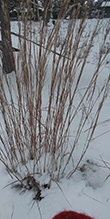 |
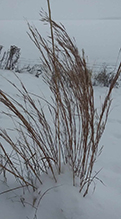 |
||||
MinnesotaSeasons.com Photos |
|||||
Habitat |
|||||
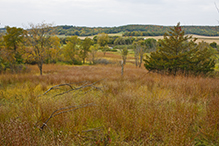 |
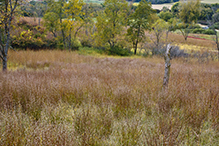 |
||||
Clump |
|||||
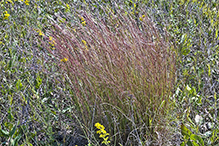 |
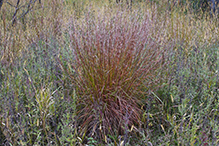 |
||||
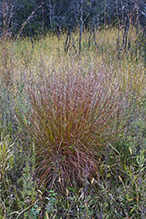 |
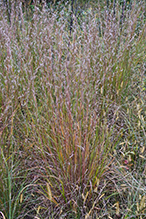 |
||||
 |
|||||
Inflorescence |
|||||
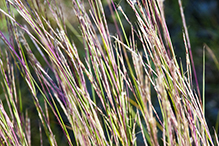 |
|||||
Infructescence |
|||||
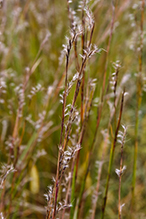 |
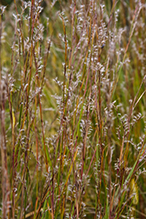 |
||||
Winter |
|||||
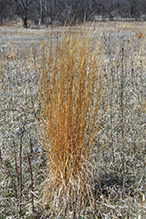 |
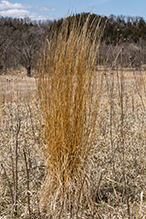 |
||||

Slideshows |
||

Visitor Videos |
|||
Share your video of this plant. |
|||
| This button not working for you? Simply email us at info@MinnesotaSeasons.com. Attach a video, a YouTube link, or a cloud storage link. |
|||
Other Videos |
|||
| Little Bluestem - Andropogon scoparium at Ion Exchange Ionxchange |
|||
About
Uploaded on Oct 4, 2011 Earthyman views Little Bluestem (Andropogon scoparium) also known as Schizachyrium scoparium at Ion Exchange, native seed and plant nursery in NE Iowa ttp://ionxchange.com/products/ANDROPOGON-SCOPARIUM-%7C-Little-Blue-Stem.html |
|||
| Little Bluestem Karl Foord |
|||
About
Published on Oct 12, 2013 No description available. |
|||
| Collecting Seed from Little Bluestem for Seed Bank chicagobotanicgarden |
|||
About
Uploaded on Feb 16, 2011 No description available. |
|||

Visitor Sightings |
|||||
Report a sighting of this plant. |
|||||
| This button not working for you? Simply email us at info@MinnesotaSeasons.com. Be sure to include a location. |
|||||
| Luciearl January 2024 |
Location: Cass County |
 |
|||
MinnesotaSeasons.com Sightings |
|||||
Blazing Star Prairie Addition Preserve, South Unit Carver Highlands WMA, South Unit Charles A. Lindbergh State Park Felton Prairie SNA, Bicentennial Unit John Peter Hoffman Spring Brook Valley WMA Kellogg Weaver Dunes SNA, Kellogg Weaver Unit Kellogg Weaver Dunes SNA, Weaver Dunes Unit Margherita Preserve-Audubon Prairie Minnesota Valley NWR, Wilkie Unit Mound Spring Prairie SNA, North Unit Mound Spring Prairie SNA, South Unit Northern Tallgrass Prairie NWR, Hoffman Unit Northern Tallgrass Prairie NWR, Pavia Unit Northern Tallgrass Prairie NWR, Rengstorf Unit Northern Tallgrass Prairie NWR, Spieker Unit Northern Tallgrass Prairie NWR, Touch the Sky Prairie Unit Pankratz Memorial Prairie, North Unit Pembina Trail Preserve SNA, Crookston Prairie Unit Pembina Trail Preserve SNA, Pembina Trail Unit Prairie Creek WMA, Koester Prairie Unit Robert Ney Memorial Park Reserve Sand Prairie Wildlife Management and Environmental Education Area Verlyn Marth Memorial Prairie SNA |
|||||

|
Created: Last Updated: © MinnesotaSeasons.com. All rights reserved. |
